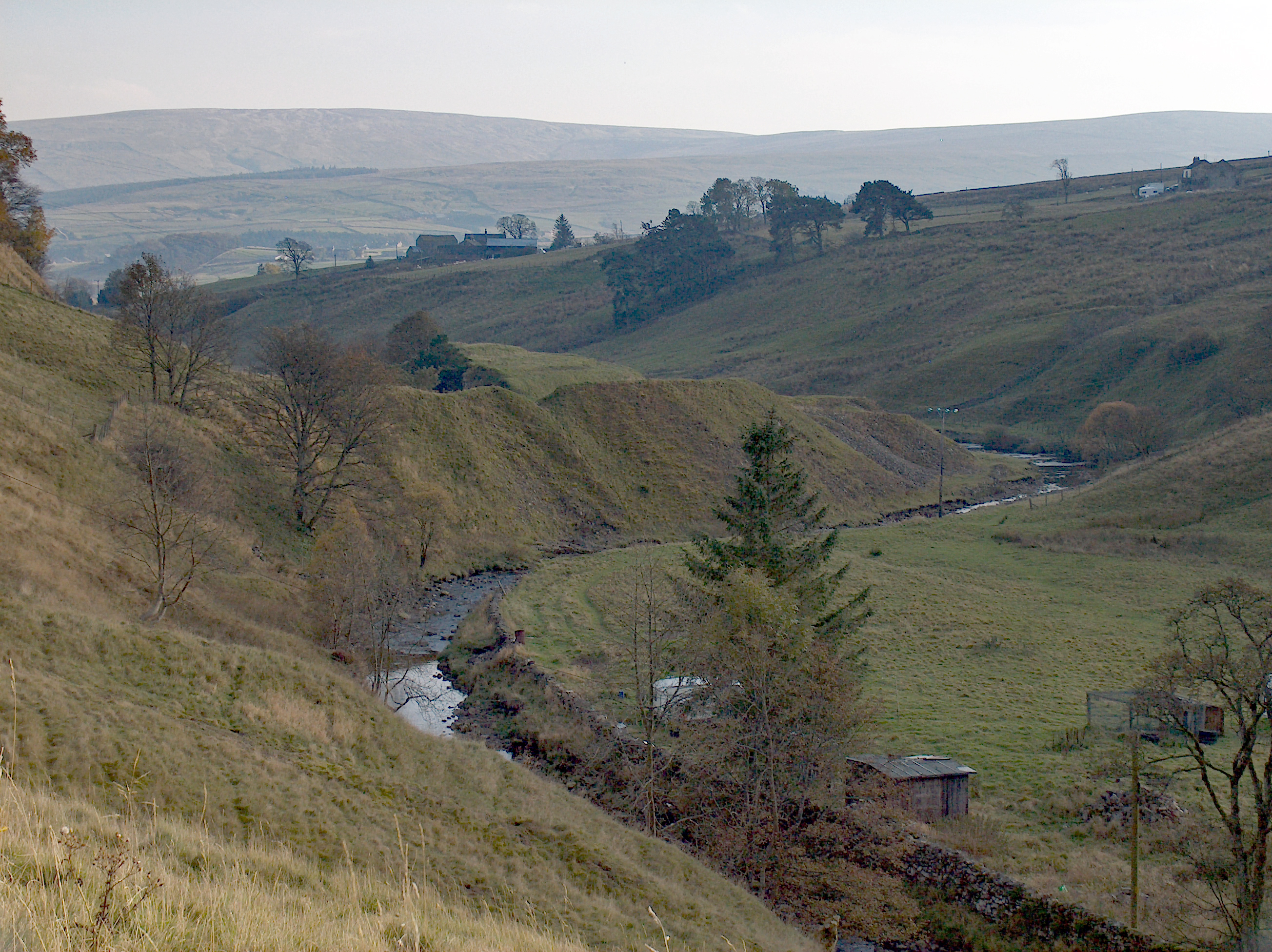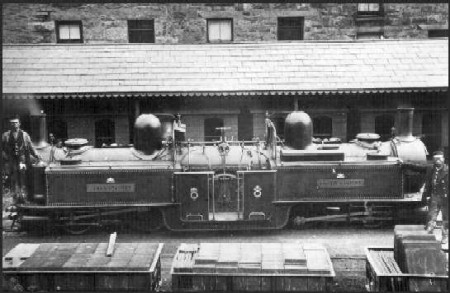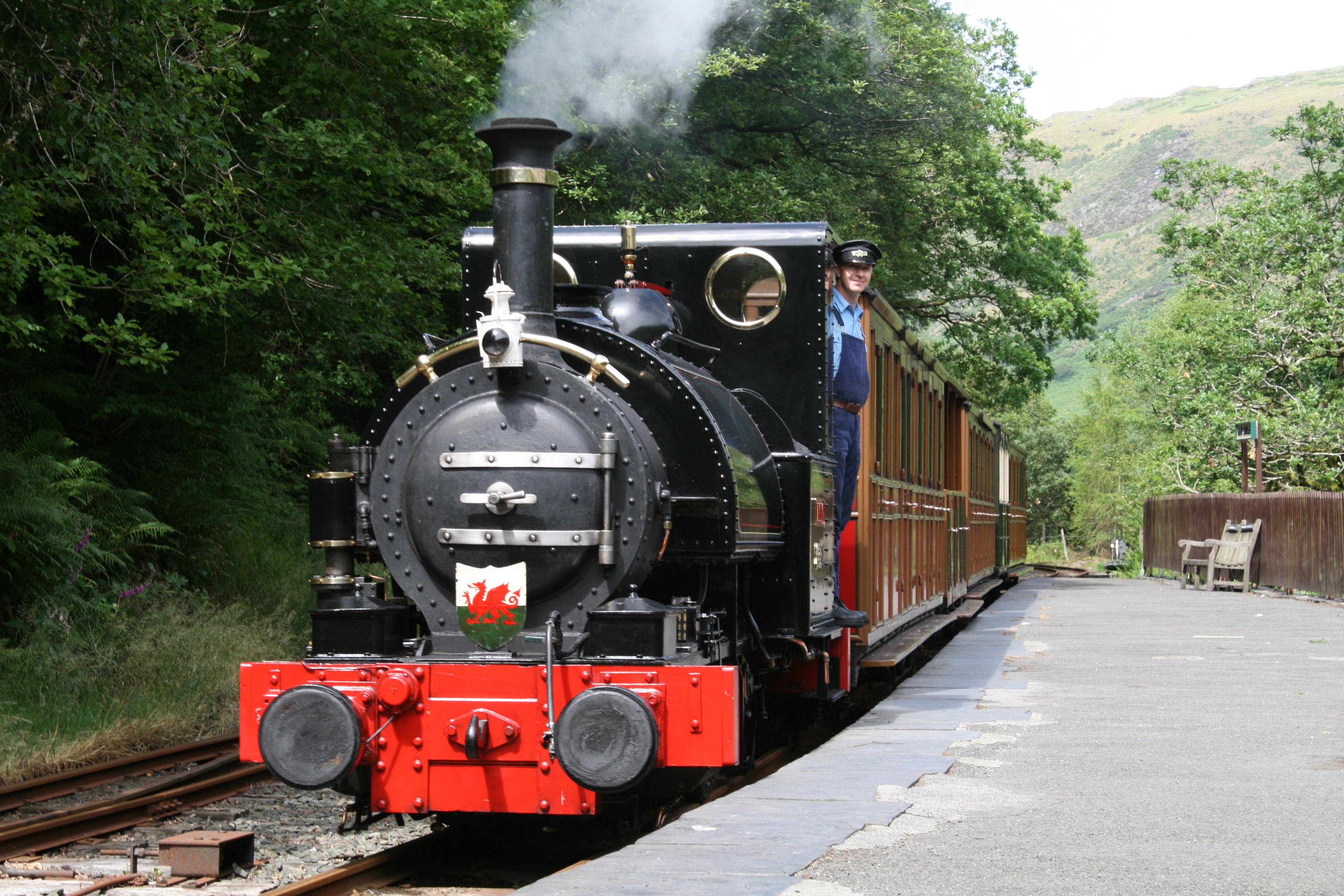|
Burnhope Reservoir Railway
The Burnhope Reservoir railway was an industrial narrow gauge railway built to serve the construction of Burnhope Reservoir near Weardale. An extensive network of narrow gauge A narrow-gauge railway (narrow-gauge railroad in the US) is a railway with a track gauge narrower than standard . Most narrow-gauge railways are between and . Since narrow-gauge railways are usually built with tighter curves, smaller struc ... lines connected the North Eastern Railway branch terminus at Weardale with the dam construction site. Locomotives References * See also * British industrial narrow gauge railways 2 ft gauge railways in England Reservoir construction railways Railway lines opened in 1930 Railway lines closed in 1937 Rail transport in County Durham Stanhope, County Durham {{England-rail-transport-stub ... [...More Info...] [...Related Items...] OR: [Wikipedia] [Google] [Baidu] |
Weardale
Weardale is a dale, or valley, on the east side of the Pennines in County Durham, England. Large parts of Weardale fall within the North Pennines Area of Outstanding Natural Beauty (AONB) – the second-largest AONB in England and Wales. The upper dale is surrounded by high fells (up to O.D. at Burnhope Seat) and heather grouse moors. The River Wear flows through Weardale before reaching Bishop Auckland and then Durham, meeting the sea at Sunderland. The Wear Valley local government district covered the upper part of the dale, including Weardale, between 1974 and 2009, when it was abolished on County Durham's becoming a unitary authority. (From 1894 to 1974 there was a Weardale Rural District.) Upper Weardale is in the parliamentary constituency of North West Durham. The dale's principal settlements include St John's Chapel and the towns of Crook, Stanhope and Wolsingham. Local climate Weardale's winters are typically harsh and prolonged with regular snow, ... [...More Info...] [...Related Items...] OR: [Wikipedia] [Google] [Baidu] |
Avonside Engine Company
The Avonside Engine Company was a locomotive manufacturer in Avon Street, St Philip's Marsh, St. Philip's, Bristol, England between 1864 and 1934. However the business originated with an earlier enterprise Henry Stothert and Company. Origins The firm was originally started by Henry Stothert in 1837 as Henry Stothert and Company. Henry was the son of George Stothert (senior), founder of the nearby Bath, Somerset, Bath engineering firm of Stothert & Pitt. Henry's brother, also named George, was manager of the same firm. The company was given an order for two broad gauge () GWR Firefly Class, Firefly class express passenger engines ''Arrow'' and ''Dart'', with driving wheels, delivered for the opening of the Great Western Railway (GWR) from Bristol to Bath, Somerset, Bath on 31 August 1840. This was soon followed by an order for eight smaller GWR Sun Class, Sun class engines with driving wheels. Stothert, Slaughter and Company Edward Slaughter joined the company in 1841, when i ... [...More Info...] [...Related Items...] OR: [Wikipedia] [Google] [Baidu] |
Railway Lines Opened In 1930
Rail transport (also known as train transport) is a means of transport that transfers passengers and goods on wheeled vehicles running on rails, which are incorporated in tracks. In contrast to road transport, where the vehicles run on a prepared flat surface, rail vehicles (rolling stock) are directionally guided by the tracks on which they run. Tracks usually consist of steel rails, installed on sleepers (ties) set in ballast, on which the rolling stock, usually fitted with metal wheels, moves. Other variations are also possible, such as "slab track", in which the rails are fastened to a concrete foundation resting on a prepared subsurface. Rolling stock in a rail transport system generally encounters lower frictional resistance than rubber-tyred road vehicles, so passenger and freight cars (carriages and wagons) can be coupled into longer trains. The operation is carried out by a railway company, providing transport between train stations or freight customer facilit ... [...More Info...] [...Related Items...] OR: [Wikipedia] [Google] [Baidu] |
Reservoir Construction Railways
A reservoir (; from French ''réservoir'' ) is an enlarged lake behind a dam. Such a dam may be either artificial, built to store fresh water or it may be a natural formation. Reservoirs can be created in a number of ways, including controlling a watercourse that drains an existing body of water, interrupting a watercourse to form an embayment within it, through excavation, or building any number of retaining walls or levees. In other contexts, "reservoirs" may refer to storage spaces for various fluids; they may hold liquids or gasses, including hydrocarbons. ''Tank reservoirs'' store these in ground-level, elevated, or buried tanks. Tank reservoirs for water are also called cisterns. Most underground reservoirs are used to store liquids, principally either water or petroleum. Types Dammed valleys Dammed reservoirs are artificial lakes created and controlled by a dam constructed across a valley, and rely on the natural topography to provide most of the basin of the ... [...More Info...] [...Related Items...] OR: [Wikipedia] [Google] [Baidu] |
British Industrial Narrow Gauge Railways
British industrial narrow-gauge railways are narrow-gauge railways in the United Kingdom and the Isle of Man that were primarily built to serve one or more industries. Some offered passenger services for employees or workmen, but they did not run public passenger trains. They are categorized by the primary industry they served. Quarrying and mining Heavy industry Engineering works Power generation Power stations were some of the last regular users of industrial steam locomotives in the United Kingdom, although most of these were standard gauge. However, several power generation facilities used narrow-gauge railways. Refineries Steel works File:Statfold Barn Railway - diesel locomotive (geograph 3911882).jpg, Preserved Shotton steelworks locomotive Zinc smelting Construction industry Contractor depots Many construction contractors maintained depots that included narrow-gauge equipment in store and under repair. While some of these were tempora ... [...More Info...] [...Related Items...] OR: [Wikipedia] [Google] [Baidu] |
Lincolnshire Potato Railways
The Lincolnshire potato railways were a network of private, narrow gauge farm railways which existed in the English county of Lincolnshire in the mid-20th century, for the purposes of transporting the annual potato crop between the fields and the nearest standard-gauge main line railhead. Major systems There were two major systems of potato railways: one located near the village of Nocton (the "''Nocton Estate Light Railway''" south of Lincoln), centred on Nocton and Dunston railway station; the other to the north of Holbeach in the south of the county, serving Fleet and Sutton Bridge stations. There were other, smaller systems elsewhere in Lincolnshire, for example at Deeping St Nicholas. Closure All of the potato railways were closed by 1969; their duties taken over by farm lorries. Some of the rolling stock and track from the Nocton system have been preserved at the Lincolnshire Coast Light Railway near Skegness Skegness ( ) is a seaside town and civil parish in the ... [...More Info...] [...Related Items...] OR: [Wikipedia] [Google] [Baidu] |
Nocton
Nocton is a village and civil parish in the North Kesteven district of Lincolnshire, England. It is situated on the B1202 road, south-east from Lincoln city centre. The population of the civil parish at the 2011 census was 819. To the east of the village is Nocton Fen with its small settlement of Wasps Nest. To the west of the village, situated at the junction of Wellhead Lane and the B1188 road, is Nocton Top Cottages consisting of eight further dwellings. At the south of the village are the remains of Nocton Hall, and to the east the earthwork remains of Nocton Park Priory. History Historically Nocton fell within the Langoe Wapentake of Kesteven until the wapentakes were abolished by the Local Government Act of 1888. Neolithic The earliest archaeological evidence of settlement in Nocton Parish are finds of the Neolithic and the Iron Ages. A possible early Neolithic flint core was recovered in 2011 from Nocton Fen from which flint blades had been napped. A Neo ... [...More Info...] [...Related Items...] OR: [Wikipedia] [Google] [Baidu] |
Sir John Fowler, 1st Baronet
Sir John Fowler, 1st Baronet, KCMG, LLD, FRSE (15 July 1817 – 20 November 1898) was an English civil engineer specialising in the construction of railways and railway infrastructure. In the 1850s and 1860s, he was engineer for the world's first underground railway, London's Metropolitan Railway, built by the "cut-and-cover" method under city streets. In the 1880s, he was chief engineer for the Forth Bridge, which opened in 1890. Fowler's was a long and eminent career, spanning most of the 19th century's railway expansion, and he was engineer, adviser or consultant to many British and foreign railway companies and governments. He was the youngest president of the Institution of Civil Engineers, between 1865 and 1867, and his major works represent a lasting legacy of Victorian engineering. Early life Fowler was born in Wadsley, Sheffield, Yorkshire, England, to land surveyor John Fowler and his wife Elizabeth (née Swann). He was educated privately at Whitley Hall near Eccles ... [...More Info...] [...Related Items...] OR: [Wikipedia] [Google] [Baidu] |
Moseley Railway Trust
The Moseley Railway Trust is a major British collection of industrial narrow gauge locomotives and other equipment. It originally had its base in south Manchester, but has relocated to the Apedale Community Country Park near Newcastle-under-Lyme, Staffordshire, where the Apedale Valley Light Railway and an important museum are being established next to the Apedale Heritage Centre. Phase 1 of the narrow gauge Apedale Valley Light Railway opened to the public in during August 2010. Plans for the large new museum building have been approved by the local council and it was intended that construction will commence during 2011. It is planned that there will eventually be an industrial demonstration railway line running around the perimeter of the MRT/Apedale Heritage Centre site, connecting with a recreation of an adit called No 7 Drift, from which coal was extracted by the previous occupiers of the site, the Aurora Mining Company, until around 1998. Overview From summer 1998 to ... [...More Info...] [...Related Items...] OR: [Wikipedia] [Google] [Baidu] |
West Lancashire Light Railway
The West Lancashire Light Railway (WLLR) is a narrow gauge railway that operates at Hesketh Bank, situated between Preston and Southport in North West England. The distance between the stations on the railway is , though track extends eastwards beyond Delph station on ledge above the old clay pit which is too narrow to contain a run round loop. An extension of up to , running along the north bank of the fishing lake has been proposed. The railway has seven steam locomotives, three of which are in operating condition; two are currently being rebuilt and another is on static display. There are also two electric locomotives and many IC locomotives. History The West Lancashire Light Railway was started in 1967, by six railway enthusiast schoolboys from the Hesketh Bank area. They wanted to save the narrow gauge railway equipment which was disappearing from local industries. They leased a strip of land above the clay pits at Alty's Brickworks and started laying track using ... [...More Info...] [...Related Items...] OR: [Wikipedia] [Google] [Baidu] |
Talyllyn Railway
The Talyllyn Railway ( cy, Rheilffordd Talyllyn) is a narrow gauge preserved railway in Wales running for from Tywyn on the Mid-Wales coast to Nant Gwernol near the village of Abergynolwyn. The line was opened in 1865Drummond 2015, page 17 to carry slate from the quarries at Bryn Eglwys to Tywyn, and was the first narrow gauge railway in Britain authorised by Act of Parliament to carry passengers using steam haulage. Despite severe under-investment, the line remained open, and in 1951 it became the first railway in the world to be preserved as a heritage railway by volunteers. Since preservation, the railway has operated as a tourist attraction, expanding its rolling stock through acquisition and an engineering programme to build new locomotives and carriages. In 1976, an extension was opened along the former mineral line from Abergynolwyn to the new station at Nant Gwernol. In 2005 a major rebuilding and extension of Tywyn Wharf station took place, including a much-expa ... [...More Info...] [...Related Items...] OR: [Wikipedia] [Google] [Baidu] |






